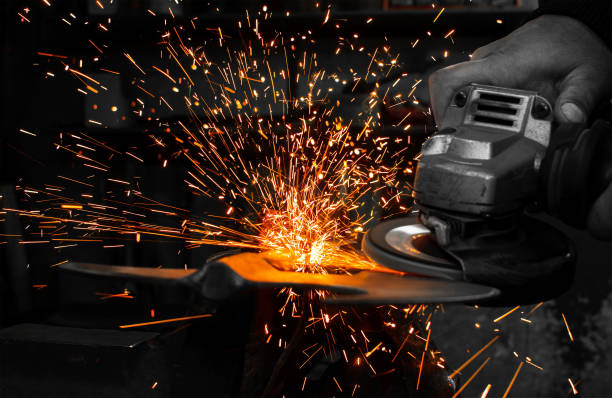TYPES AND TYPES OF STEEL


The main consumer expectation from a kitchen knife is easy and convenient cutting, cleaning, and food processing. Therefore, the main criterion for the quality of a knife is the quality of the blade, which depends, first of all, on the technology and materials of manufacture. A high-quality blade is not just sharp, it maintains an impeccable sharpening for a long time.
Many knife manufacturers around the world use different types of steel as raw materials. The cheapest and least quality Chinese knives with a soft stainless steel blade quickly become blunt and lose their geometry. Because of this, when cutting, you have to apply extra effort, and the product is crushed and the slices look untidy.
DIFFERENCE BETWEEN EUROPEAN AND DAMASCUS STEELS.
To understand which steels for knives are considered the best, you should familiarize yourself with the main manufacturers.
European and Damascus manufacturers have been fighting for leadership in the production and marketing of professional kitchen knives for many years. The main difference between the products of these two varieties is the quality of the steel used and the sharpening angle. European knives are sharpened at an angle of 30-45˚ and are made from softer types of steel. Damascus technology involves the use of harder types of steel, and the sharpening angle is only 10-25˚. This approach provides an extremely sharp blade and long life without the need for frequent sharpening. European knives are easier to sharpen at home, but they get dull much faster.
Damascus blade.
Fine Damascus blade sharpening provides excellent cutting performance. The cutting edge remains perfectly even, the blade falls into the product with minimal hand effort, and the expression “cut like clockwork” is true even for hard and dense products.
European knives are sharpened with musat and Damascus ones with a water stone. The frequency depends on the hardness of the steel and the intensity of use, compliance with the rules of care. Mild steels used by Europeans may require straightening after a month of use. Premium Damascus blades can stay super sharp for over a year.
Let us consider in more detail the types of steel used in knife production. Each of them has its pros and cons.
STAINLESS STEEL.
When answering the question of which steel is better for a knife, most ordinary people will answer – “stainless steel”. But not because it is, but because it is the most famous and inexpensive material. However, the characteristics of steel for knives can vary significantly. The term “steel” refers to an alloy of iron with carbon and possibly other additives. Stainless steel is an alloy with a high chromium content that provides corrosion resistance and relatively low carbon content.
The cheapest Chinese-made blades are most often made of stainless steel marked 420 or 420j, Russian – 40X12. In addition to low cost, its advantages include good moisture resistance. However, the material is too soft, so it is used for the production of economy-class kitchen knives. At the same time, well-known brands also use 420 steel, and high-quality processing and hardening give it very good cutting properties. This proves that the quality of steel processing in production is often more important than the chemical composition.
Also, economy-class stainless steels with a low carbon content (about 0.5-1%) include materials with markings: AUS-6, 440A, and others.
HIGH CARBON AND DAMASCUS STEEL.
In addition to chromium, carbon inclusions are of particular importance in the composition of Damascus knife steels. The more of this component in the composition, the higher the hardness of the metal, the longer the blade retains its sharpness. In modern steel, the proportion of carbon can reach 2.1%. But there is a nuance – the harder the blade, the more prone it is to the appearance of micro-chips and cracks. Many manufacturers solve this problem with the help of linings made of more wear-resistant low-carbon alloys. In any case, a high-carbon steel blade needs to be handled with care.
Stainless steel.
While the Europeans are poring over the strengthening of stainless steel, Damascus has found a compromise solution. They remembered the unique properties of Damascus steel, which has a high hardness but remains moderately flexible. The production technology provides for the alternation of layers of metal with a high carbon content with more flexible steel. The result is a multi-layer thin and sharp blade with long service life.
The more layers, the more durable and sharp the blade becomes. For the first time this technology was applied by the Damascus company Damascus1 and today it has no equal in the production of Damascus steel kitchen knives. In the modern assortment of the brand, knives are made of Damascus steel with several layers from 3 to 63.
Addition to carbon.
In addition to carbon, stainless steel is. Alloyed with other components that increase resistance to damage, the effects of aggressive chemicals, and hardness. The uniformity and distribution structure within the alloy in different blades is different. Commonly used supplements include:
- Vanadium. It gives the metal elasticity, protects against aggressive chemical attacks, enhances the properties of chromium.
- Chromium. Increases the ability of steel to harden, increases resistance to corrosion and mechanical damage.
- Molybdenum. Makes the blade hard, reduces the brittleness of the metal.
Silicon, cobalt, tungsten, and other additives provide additional strength.
Thanks to such a multicomponent composition, there is no question of which steel is better for a knife. It is Damascus steel knives that acquire high hardness (indicated by the HRc marking) combined with excellent performance properties. The classification of steel for knives by hardness provides for two varieties – medium and high degree. If European-made kitchen knives usually have an average hardness of 46-55 HRc, then Damascus blades can boast a high hardness of 57-60 HRc and higher. At the same time, they are quite plastic and do not need frequent sharpening, they serve for decades.
Read More: Super Savvy Ways To Style Your Living Room





